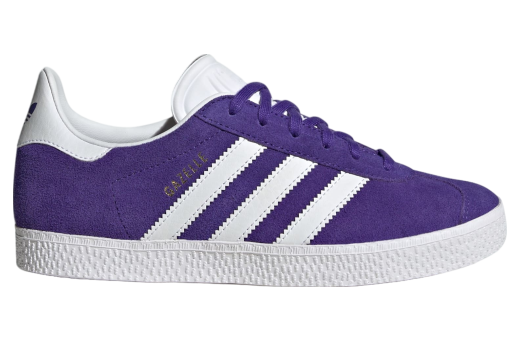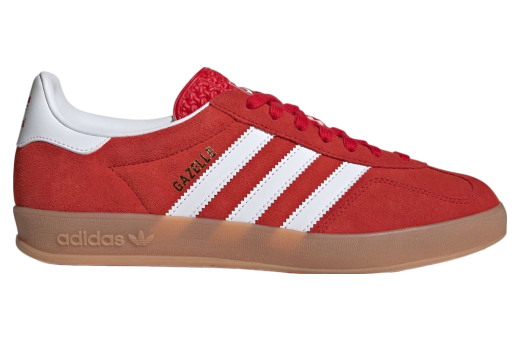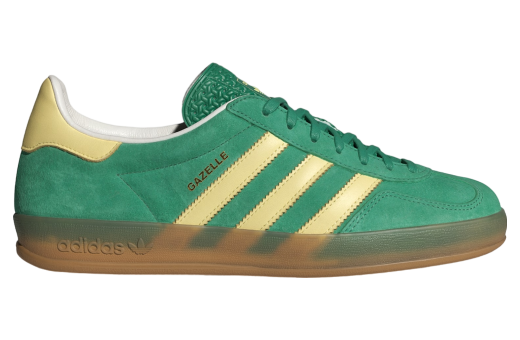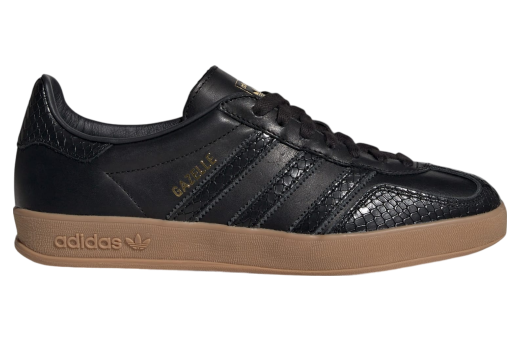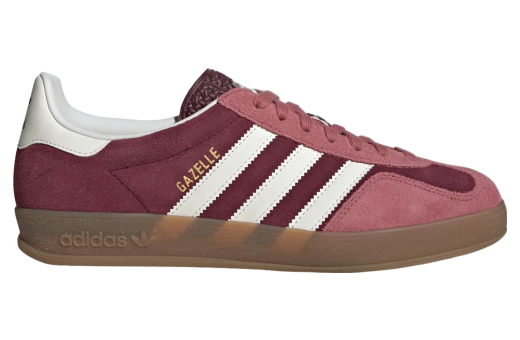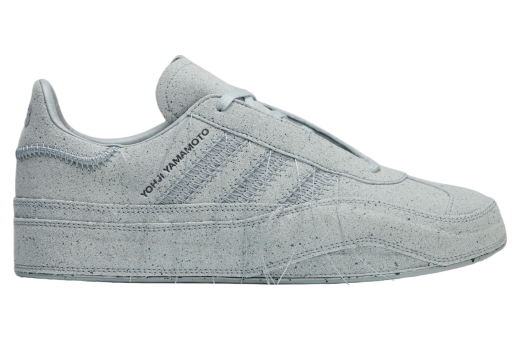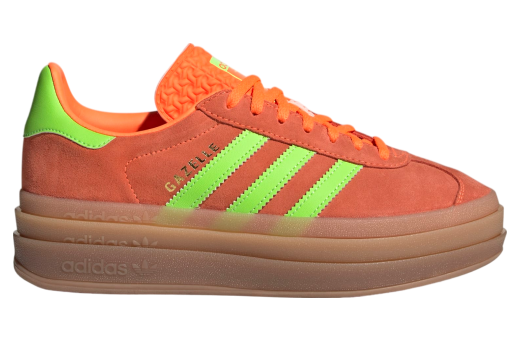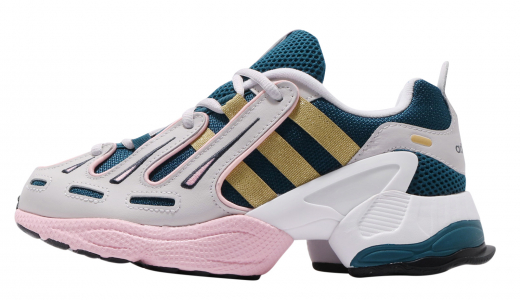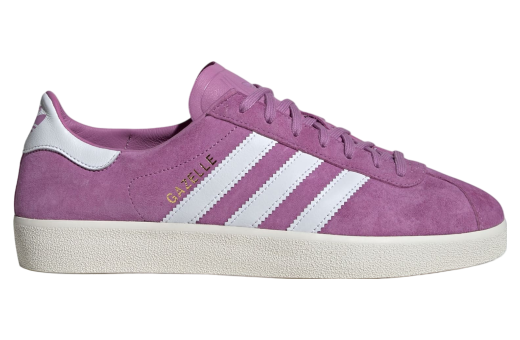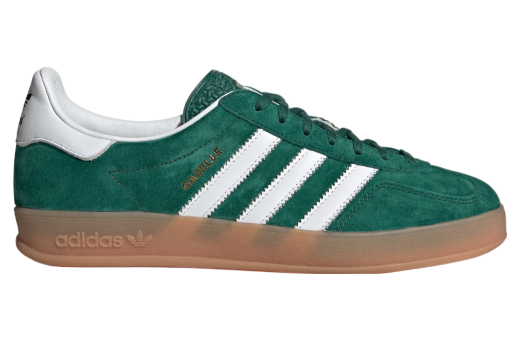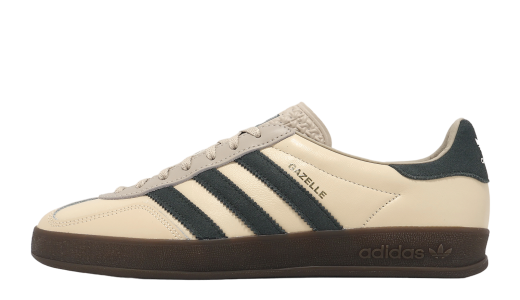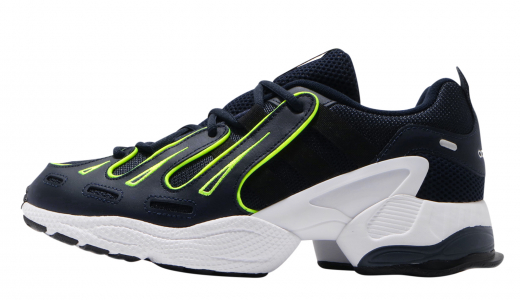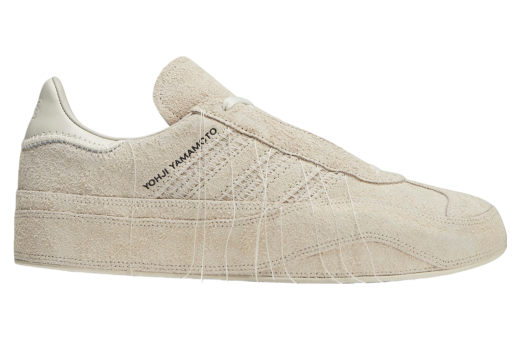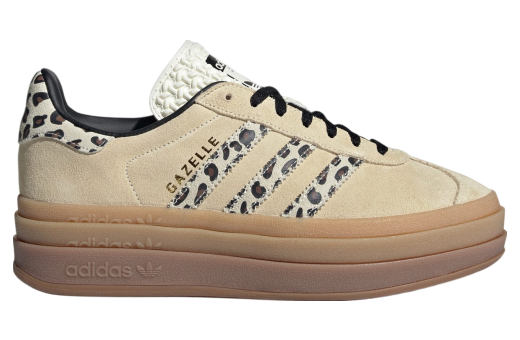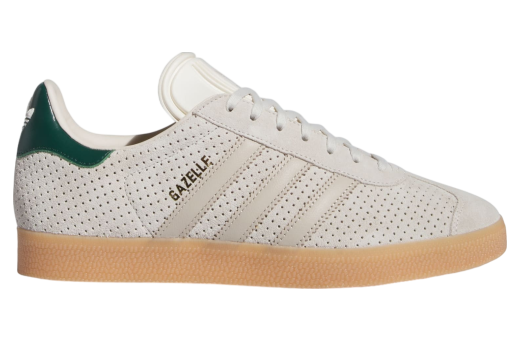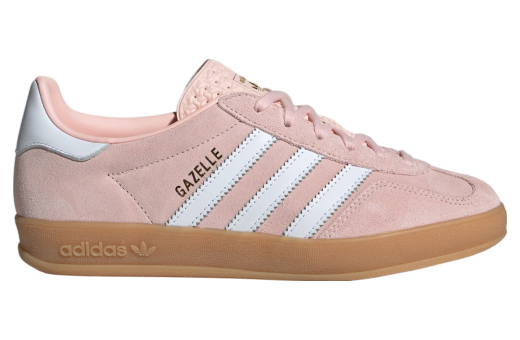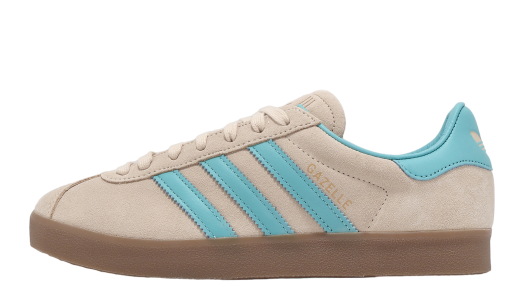Adidas Gazelle
The adidas Gazelle is an iconic sneaker that has solidified its status in both athletic and casual fashion realms since its introduction in the 1960s. Originally designed as a training shoe for athletes, the Gazelle quickly gained popularity for its sleek design and versatile functionality. The shoe features a minimalist silhouette, distinguished by its suede upper and contrasting three-stripe branding along the sides. Over time, it has been reissued in a variety of vibrant and subdued colorways, allowing it to remain relevant through decades of changing fashion trends. The Gazelle's simple yet classic design has allowed it to transcend its athletic roots, becoming a staple in streetwear and casual fashion.
In addition to its aesthetic appeal, the adidas Gazelle is celebrated for its comfort and durability. The shoe's rubber sole provides excellent grip and flexibility, making it suitable for both everyday wear and light athletic activities. Inside, the cushioned insole ensures a comfortable fit, while the padded collar offers additional support around the ankle. This combination of style and functionality has earned the Gazelle a loyal following among sneaker enthusiasts, athletes, and fashion-forward individuals alike. Whether paired with jeans, shorts, or even a dress, the adidas Gazelle effortlessly elevates any outfit, proving that good design and quality never go out of style.
History of Adidas Gazelle
The History of the Adidas Gazelle: An Iconic Journey
The Adidas Gazelle is not just a shoe; it's a cultural emblem that has weaved its way through decades of sports, music, and fashion history. Launched in the 1960s, this iconic sneaker has managed to become a symbol of both athletic prowess and urban cool. To truly understand its significance, we need to examine its origins, its evolution over time, and its impact on various subcultures around the world. This history provides an extensive look into the Adidas Gazelle from its inception to its status as an enduring classic.
Origins and Early Years
1960s: A Humble Beginning
The story of the Adidas Gazelle began in 1966. Released as a training shoe, the Gazelle was among the first Adidas sneakers that utilized suede material—an innovation at the time. Its distinct texture and style stood out in a market saturated with leather-based footwear. The initial design was relatively simple, with the iconic Three Stripes logo and a gum sole that provided excellent grip and performance.
The Gazelle was released in two distinct colorways: red, intended for indoor training activities, and blue, for outdoor usage. These color differentiations were not just aesthetic choices but served a practical purpose, catering to athletes’ varying needs. The shoe's versatility quickly garnered attention, especially in the sports community.
Performance and Design
Designed initially as a training shoe, the Gazelle's structure emphasized flexibility, durability, and comfort. The use of suede made the shoe lighter and more comfortable than its leather counterparts, and the single panel design offered greater maneuverability. The pivot point on the sole was ideal for activities requiring quick turns and swift directional changes, making it popular among athletes.
The Rise to Iconic Status
1970s: From Sports to Lifestyle
By the 1970s, the Adidas Gazelle had transcended its original purpose. While still popular among athletes, it began to infiltrate the casual wear market. The clean lines, minimalist design, and comfortable fit made it suitable for everyday wear. The shoe's endorsement by professional athletes only fueled its growing reputation. The Gazelle symbolized not just athletic skill, but also a certain laid-back lifestyle.
Subcultures and Music
The late 1970s and early 1980s saw the Adidas Gazelle embedded in the burgeoning hip-hop scene, particularly in the United States. The shoe was embraced by B-boys and street dancers for its comfort and style, and its association with hip-hop culture became a defining feature. Simultaneously, in the United Kingdom, the Gazelle found favor among the football casuals—fans who followed football clubs around the country, often clashing with rival fans. For these groups, the Gazelle was a symbol of subcultural identity.
The 1980s and 1990s: A Pop Culture Phenomenon
Embraced by Icons
The 1980s and 1990s saw the Adidas Gazelle solidifying its status as a global icon. During this period, the sneaker was often seen on the feet of celebrities, musicians, and subcultural communities alike. The shoe’s clean design and range of available colors allowed for easy integration into various fashion styles, from punk to grunge to hip-hop.
Britpop bands like Oasis further popularized the Gazelle in the 1990s. The band's members frequently wore the shoe, associated it with the rebellious and carefree spirit of the era. As Britpop surged in popularity, so did the Gazelle, cementing its reputation as the footwear of choice for a generation.
Reissues and Variations
Recognizing the Gazelle's growing popularity, Adidas began reissuing the shoe in a variety of colorways and styles. The 1991 reissue, in particular, stayed true to the original design but offered fresh color options that attracted a new generation of fans. The simplicity and versatility of the Gazelle meant that it could be endlessly customized and still maintain its core appeal.
The 2000s and Beyond: A Timeless Classic
Revival and Reinvention
With the turn of the millennium, the Adidas Gazelle continued to enjoy its status as a timeless classic. In the 2000s, the sneaker market saw a resurgence in retro styles, and the Gazelle was perfectly positioned to benefit from this trend. Adidas capitalized on the renewed interest by re-releasing vintage styles and introducing new collaborations with designers, artists, and celebrities.
Collaborations with figures such as fashion designer Jeremy Scott and musician Pharrell Williams brought fresh perspectives to the classic shoe, intertwining it with contemporary fashion trends while paying homage to its rich heritage. Limited-edition releases rarely stayed on shelves for long, proving that the demand for the Gazelle was as strong as ever.
Cultural Impact
The Adidas Gazelle has left an indelible mark on various cultural landscapes. Its influence spans sports, music, street fashion, and more. It has been featured in films, music videos, and fashion magazines, often heralded as the epitome of cool, casual style. Celebrities across generations have worn the Gazelle, showcasing its universal appeal.
In recent years, the sneaker has also been embraced by the sneakerhead community—collectors and enthusiasts who seek out rare and iconic shoes. The Gazelle's rich history and timeless design make it a coveted piece for collectors, and its various iterations offer something for everyone, from the purist who seeks the original 1966 design to the fashion-forward individual seeking a modern twist.
Technological Advances and Sustainability
Modern Innovations
As consumer preferences have evolved, so too has the Adidas Gazelle, incorporating modern technology while retaining its classic aesthetic. Technological advancements in manufacturing have allowed for improved comfort and durability without compromising the shoe's iconic look.
For instance, some modern versions of the Gazelle feature enhanced cushioning and support, suitable for today’s more demanding lifestyles. High-quality materials and eco-friendly production methods are also increasingly used, reflecting both the company's and consumers' growing focus on sustainability.
Sustainability Efforts
Adidas has made strides in addressing environmental concerns, and the Gazelle line is no exception. Recent efforts include the use of recycled materials and environmentally friendly dyes. By ensuring that the Gazelle is not just a fashion statement but also a sustainable choice, Adidas is aligning the shoe with contemporary values of environmental responsibility.
Adidas Gazelle in the Digital Age
E-commerce and Social Media
The advent of e-commerce has revolutionized how consumers access and purchase the Adidas Gazelle. Online stores offer a wider range of choices and make it easier for consumers around the world to find limited-edition releases and customized versions of the shoe. Social media platforms, particularly Instagram and TikTok, have further amplified the Gazelle's cultural presence. Influencers and fashion enthusiasts showcasing their Gazelle-inspired outfits contribute to the shoe's ongoing relevance.
Conclusion: A Legacy That Continues
The Adidas Gazelle has come a long way since its inception in the mid-1960s. What started as a training shoe has evolved into a cultural staple embraced by athletes, musicians, fashion enthusiasts, and everyday consumers alike. Its minimalist design, comfort, and versatility have allowed it to transcend generations and trends, making it a true classic in every sense of the word.
While fashion trends come and go, the enduring appeal of the Adidas Gazelle lies in its ability to adapt while staying true to its roots. As we look to the future, it is clear that the Gazelle will continue to be a symbol of style, comfort, and cultural significance for years to come. Whether you're a sneakerhead, a fashion enthusiast, or someone simply looking for a reliable and stylish shoe, the Adidas Gazelle stands as a testament to timeless design and enduring appeal.

